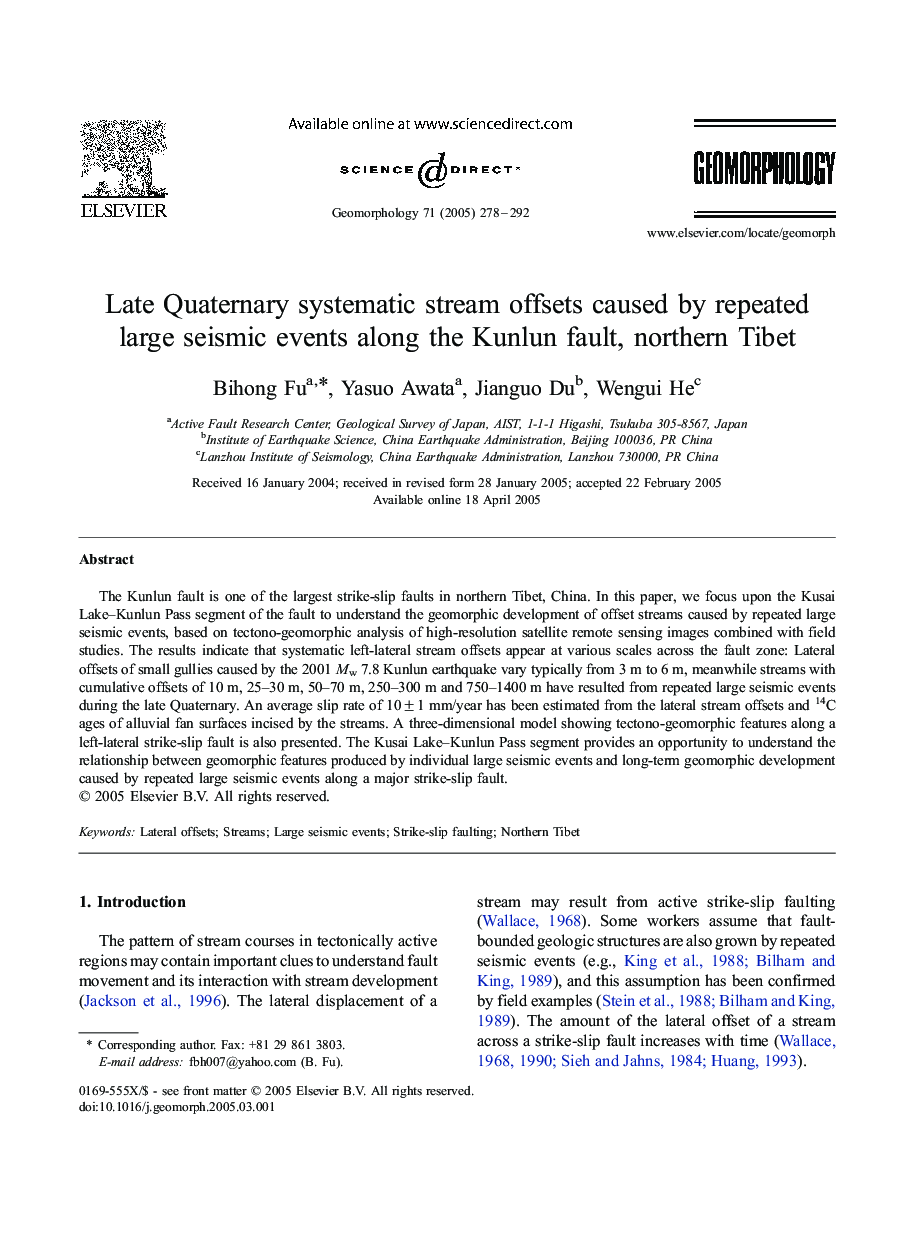| Article ID | Journal | Published Year | Pages | File Type |
|---|---|---|---|---|
| 9524832 | Geomorphology | 2005 | 15 Pages |
Abstract
The Kunlun fault is one of the largest strike-slip faults in northern Tibet, China. In this paper, we focus upon the Kusai Lake-Kunlun Pass segment of the fault to understand the geomorphic development of offset streams caused by repeated large seismic events, based on tectono-geomorphic analysis of high-resolution satellite remote sensing images combined with field studies. The results indicate that systematic left-lateral stream offsets appear at various scales across the fault zone: Lateral offsets of small gullies caused by the 2001 Mw 7.8 Kunlun earthquake vary typically from 3 m to 6 m, meanwhile streams with cumulative offsets of 10 m, 25-30 m, 50-70 m, 250-300 m and 750-1400 m have resulted from repeated large seismic events during the late Quaternary. An average slip rate of 10 ± 1 mm/year has been estimated from the lateral stream offsets and 14C ages of alluvial fan surfaces incised by the streams. A three-dimensional model showing tectono-geomorphic features along a left-lateral strike-slip fault is also presented. The Kusai Lake-Kunlun Pass segment provides an opportunity to understand the relationship between geomorphic features produced by individual large seismic events and long-term geomorphic development caused by repeated large seismic events along a major strike-slip fault.
Related Topics
Physical Sciences and Engineering
Earth and Planetary Sciences
Earth-Surface Processes
Authors
Bihong Fu, Yasuo Awata, Jianguo Du, Wengui He,
